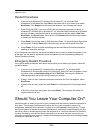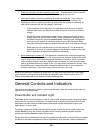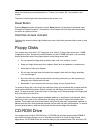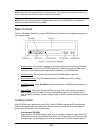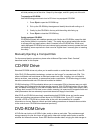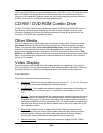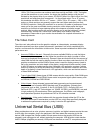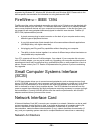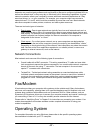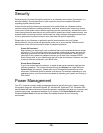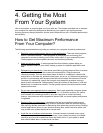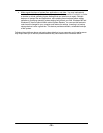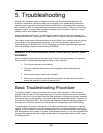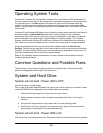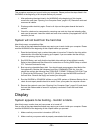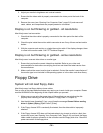
- 27 -
Networks may use third-party software such as Novell® or Banyan to configure individual NICs as
well as the network itself, or they may rely on Windows' built-in networking capabilities. A typical
network connection allows your computer to access additional remote drives/devices as if they
were local drives, i.e., on your computer. For example, your computer might have access to
network drives P, Q, and R, which could be accessible by more than one user. Most networks
also allow computers to share printers, modems, and other system resources.
There are two basic types of networks:
• Peer-to-peer
- Peer-to-peer networks are typically found on small networks such as in a
small computer lab or office. All computers on a peer-to-peer network share devices and
data equally. For example, one computer might have a shared printer attached to it, while
another computer has a shared modem for Internet connections. No computer is
designated as the “server” or “client.”
• Client-server
- On a client-server network, one or more computers are designated as
“servers,” while the rest of the computers (usually the majority) are classified as “clients.”
Depending on the physical wiring of the network, client computers may share the server’s
data. Servers act as file or application repositories, run shared printers, or serve as a
gateway to external resources, such as the Internet.
Network Connections
Most network cards use one of the following types of connections:
• Coaxial cable with a BNC connector - This wiring resembles a TV cable and uses twist-
lock connectors to secure the various components. In a coaxial cable network, computers
branch off the main line using “T” connectors. The last computer in line must use a
special “T” connector with a terminator.
• Twisted Pair - Twisted pair network wiring resembles an oversized telephone cable.
Individual network computers connect to the network via one or more hubs. Instead of
running to the next computer, network cables from various networked computers are
plugged into a hub. Twisted pair networks allow greater installation flexibility.
Fax/Modem
A fax/modem provides your computer with a gateway to the outside world. Many fax/modems
also have voice capability, allowing them to be used as telephones and full-featured voice mail
systems when combined with software such as Symantec's WinFax. Other software, such as
Symantec's PCAnywhere, allows you to access your computer remotely and control it as though
you were sitting in front of it. You may also remotely access networks and the Internet.
Please refer to “Identifying Ports” in Chapter 2 for instructions on connecting your modem. Your
modem documentation and modem software contain complete information on using your
modem's capabilities.
Operating System
For complete information on using Windows, please refer to the specific operating system
documentation included with your CTL computer.



